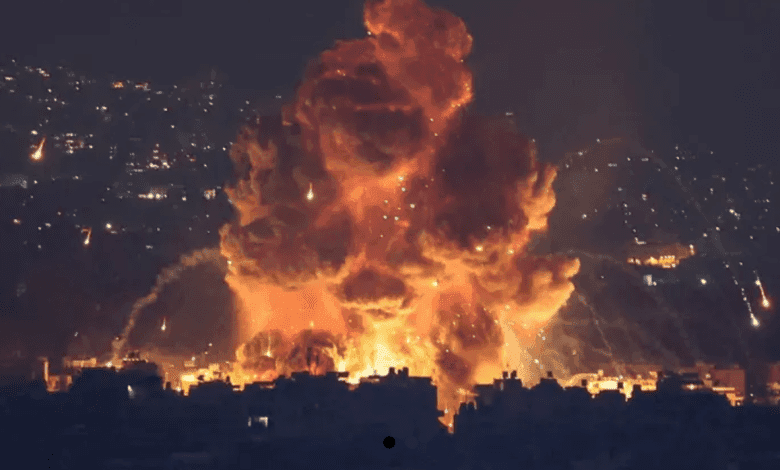المستشفيات قد تصمُد بضعة أسابيع
عقب مرور حوالى الشهرين على استشراس العدوان الإسرائيلي وتوسّع رقعة الحرب وخروجها عن قواعد اللعبة، انطلاقاً من حادثة تفجير الـ pagers التي أدّت إلى مقتل 32 شخصاً وإصابة أكثر من 3000 بجروح و”شغّلت” طواقم المستشفيات بكامل العديد والعتاد، أثبتت المستشفيات الخاصة أنها فعلاً مستعدة وعلى جهوزية لمواجهة الحرب. لكن إلى متى يمكن أن يصمد القطاع في حال استمرّت الحرب لفترة أشهر طويلة؟
تحلّ الحرب على القطاع الاستشفائي في لبنان في وقت يتخبّط فيه بأزمة اقتصادية ويلتقط القطاع الصحّي اللبناني أنفاسه بعدما تسلّل الوهن إلى داخل صفوفه منذ بدء الأزمة المالية والاقتصادية في لبنان في العام 2019 بسبب هجرة عدد كبير من طواقمه الطبية والتمريضية، إذ هاجر أكثر من 20% من الممرّضات ونحو 40% من الأطباء. كل ذلك فضلاً عن انقطاع أدوية الأمراض المزمنة وتوقف الجهات الضامنة عن تغطية المضمونين مروراً بمطبات كورونا وانفجار 4 آب الذي عالج في أعقابه القطاع الاستشفائي أكثر من 6000 جريح، فيما كانت مباني مستشفيات بيروت متضرّرة بشكل شبه كامل. ناهيك عن ارتفاع الكلفة الاستشفائية ودولرتها وانهيار الدولة في ظلّ انعدام الدعمين الخليجي والغربي، فجرفت معها المستشفيات الحكومية ومراكز الرعاية الصحية التي تدهور وضعها وأداؤها.
وتحسّباً لتداعيات الحرب، كان وزير الصحة في حكومة تصريف الأعمال، فراس الأبيض، قد أعلن عن خطة الوزارة، في حال نشوب الحرب. وبالفعل، جرى تنفيذ هذه الخطة لاحقاً، وقد أثبتت نجاعتها.
لغاية اليوم، الأمور لا تزال تحت السيطرة خصوصاً في ظلّ بدء لبنان تلقّي المساعدات الطبية والأدوية التي يحتاجها لمعالجة الحالات الطارئة وتحديداً الجرحى الذين يسقطون يومياً بالعشرات جرّاء الغارات المستمرة على المباني والمراكز التي تدّعي إسرائيل أنها تابعة لـ”حزب اللّه” والتي توجد في المناطق المأهولة. ويعتبر وزير الصحة أن “الهدف الأساسي للمساعدات الدولية، يكمن في توفير المستلزمات الضرورية للمستشفيات، ولمراكز الطوارئ مشدّداً على حساسية هذه المرحلة في لبنان، باعتبار أن القطاع الصحي لن يتمكّن من الصمود بتاتاً، إن أصبحت الحرب على لبنان، مماثلة للعدوان الإسرائيلي على غزة”.أما عن كلفة الاستشفاء، فإن جرحى الحرب الذين ليست لديهم جهة ضامنة يتلقون العلاج على حساب وزارة الصحة التي تنفق من حصتها في موازنة 2024 ومن المساعدات التي تتلقاها من الدول الخليجية.
قدرة المستشفيات على الصمود وتحديداً الحكومية البالغ عددها 33، تتضاءل ليس بسبب الإقبال الكثيف عليها بل أيضاً جراء الغارات التي تحصل بالقرب من بعضها فـ”تلحقها طرطوشة” وتتضرّر مادياً. فالأضرار التي ألمّت بمستشفى بيروت الحكومي جراء غارة حصلت بالقرب منها كانت جسيمة ورغم ذلك لا يزال المستشفى يعمل بطاقته القصوى كما أوضح مدير مستشفى بيروت الحكومي جهاد سعادة. كما أن 4 مستشفيات في الجنوب خرجت عن الخدمة منذ فترة، وهي: مستشفيات “مرجعيون الحكومي” و”ميس الجبل الحكومي” و”بنت جبيل الحكومي”، و”صلاح غندور” في بنت جبيل في بداية الشهر الجاري والـ”سانت تيريز” الذي يتمّ استهداف محيطه. أما مستشفى الساحل في الضاحية الجنوبية، فهو معرّض للاستهداف أيضاً وتم نقل القاطنين فيه إلى مبنى آخر، وهذا الأمر ينذر بأن أداء القطاع الاستشفائي الحكومي بدأ يضعف ولا يمكن الاستمرار على هذا المنوال. ووفق أحدث الأرقام هناك 8 مستشفيات خرجت عن الخدمة كلياً جراء العدوان و8 مستشفيات تضررت جزئياً.
القطاع الاستشفائي الخاص
وضع القطاع الاستشفائي الخاص ليس أفضل حالاً، إذ شرح نقيب المستشفيات الخاصة في لبنان سليمان هارون لـ”نداء الوطن” أن “هناك في لبنان 125 مستشفى خاصاً موزعة على كل الأقضية تعمل بشكل متوازن في الأيام العادية. أما اليوم في زمن الحرب فهناك مستشفيات تقع في مناطق العمليات العسكرية تحديداً في الجنوب والضاحية والبقاع وبعلبك يتمحور عملها حول جرحى الحرب والحالات الطارئة ولا تعمل بشكل طبيعي. مع الإشارة إلى أن الطاقة الاستيعابية للأسرّة في كل الأقضية كانت تبلغ نحو 8000 سرير، تراجع عددها اليوم إلى 6000 مع خروج عدد من المستشفيات عن العمل، في حين أن عدد الأسرّة في المستشفيات الحكومية يشكّل في الأيام العادية نحو 1400 سرير وقد تضاءل عددها بعد خروج عدد من المستشفيات عن العمل.
أما المستشفيات الموجودة في المناطق التي لا تتضمّن عمليات عسكرية وشهدت نزوحاً، فيقول هارون، إنها “تعمل بشكل شبه طبيعي ولكن “الحالات الباردة” التي يمكن تأجيلها مثل الأنف والأذن والحنجرة يتمّ تأجيلها للإفساح في المجال أمام الجرحى والحالات الطارئة للمعالجة والتي يمكن أن تزيد بسبب النزوح وتقليص العمل بالمستشفيات بالمناطق التي تتضمّن عمليات عسكرية” .
ويصف هارون الوضع الراهن بالـ”مقبول” وبأننا قادرون على السيطرة على الوضع وعلى تلبية احتياجات الجرحى والمرضى الاعتياديين، ولكن المستشفيات تعاني نقصاً في السيولة. فالجهات الرسمية في الوقت الحالي التابعة للدولة التي تغطي المواطنين، لا تعمل إداراتها بشكل طبيعي هناك مكاتب مقفلة ووزارة الصحّة نقلت مكاتبها إلى الكرنتينا وبالتالي العمل الإداري لا يسير جيداً، وكذلك الضمان الاجتماعي، فهناك مراكز تضرّرت بسبب القصف وهناك موظفون لا يمكنهم الوصول إلى مراكز عملهم. فيما موظفون آخرون نزحوا مع عائلاتهم ولا يستطيعون أن “يُداوموا” في أماكن عملهم. هذا الواقع يؤخّر تسديد المستحقات المترتبة للمستشفيات عليها، وهي تحت ضغط كبير لأن كل ما تشتريه تدفع ثمنه نقداً عند التسليم، في حين أن تسديد المستحقات يستغرق أشهراً”.
تسديد المستحقات
في الوقت الحاضر، يقول هارون “يمكن استمرار المستشفيات الخاصة في أداء عملها لفترة أسابيع وليس لأشهر، آملاً ألا تطول الحرب للتمكن من تلبية حاجات المرضى مؤكّداً مرّة أخرى “أننا لا نستطيع الاستمرار على هذا النمط لأشهر طويلة”، فالطواقم الطبيّة تعمل فوق طاقتها، وقدرة التحمّل عندها بدأت بالنفاد أمام حجم وهول الإصابات، فمنذ بدء الحرب حتى الآن، وفق مركز عمليات الطوارئ العامة في وزارة الصحّة العامة، بلغت الحصيلة الإجمالية لعدد الضحايا والجرحى منذ بدء العدوان اكثر من 3365 ضحية و 14344 جريحاً لغاية أمس الأول.
وفي مقارنة لوضع القطاع الاستشفائي اليوم مع وضعه في فترة حرب تموز 2006 التي دامت 33 يوماً، وقتها كانت جميع المستشفيات في لبنان جاهزة وقادرة على استقبال الجرحى. بينما اليوم، باتت الأمور صعبة ومختلفة، لأننا نحتاج، استناداً إلى الأبيض، إلى كميات كبيرة من الوقود والأدوية لاستعمالها خلال أيام الحرب، وهي غير متوفرة حالياً كما يجب، نتيجة الأزمة الاقتصادية.
في موازاة خروج عدد من المستشفيات عن الخدمة، إنضم عدد كبير من المراكز الصحية إلى القافلة. واستناداً إلى تقرير منظمة الصحة العالمية، هناك أكثر من 100 مركز للرعاية الصحية في لبنان تضرّرت بالقصف الإسرائيلي. ولتفادي الأسوأ وتفادي الوصول إلى مرحلة قصور أو خروج القطاع الاستشفائي عن السيطرة، لا بد من حصول واحدٍ من أمرين: إما تأمين دعم مالي سخي للقطاع الصحّي ، أو توقّف الحرب. والاحتمالان ضئيلا التحقيق، وفق المعطيات والمؤشرات المتوفرة حتى اليوم.
المصدر: باتريسيا الجلاد – نداء الوطن
Hospitals May Only Survive a Few Weeks Amid Ongoing Conflict
It has been approximately two months since the intensification of the Israeli assault on Lebanon, and with the expansion of the war, moving beyond the initial rules of engagement, the situation has become increasingly complicated. Starting from the explosion of the pagers that killed 32 people and injured over 3,000, the hospitals in Lebanon have been stretched to their limits. Despite this, private hospitals have proven their readiness to face the medical demands caused by the war. But the key question remains: how long can the health sector in Lebanon survive if the conflict continues for several months?
The Health Sector’s Crisis in Lebanon
The Lebanese healthcare system is facing numerous challenges, and the war arrived at a time when the country’s economic crisis was already in full force. Since 2019, when Lebanon’s financial crisis began, the healthcare system has been steadily deteriorating. Over 20% of nurses and about 40% of doctors have left the country, and the system has also been affected by the shortages of medications for chronic diseases, as well as the suspension of coverage by some insurance providers. The sector also had to manage the effects of the COVID-19 pandemic and the catastrophic Beirut port explosion on August 4, 2020, which left hospitals severely damaged and forced to treat thousands of casualties.
In response to the escalating situation, Minister of Public Health in the caretaker government, Firas Abiad, had developed an emergency plan to manage the consequences of potential conflict. This plan has been implemented successfully, yet challenges persist.
Current Situation of Lebanese Hospitals
For now, the situation remains under control, largely thanks to international aid, which has provided essential medical supplies for hospitals. These supplies focus on urgent needs such as treatment for war casualties, with victims continuing to fall daily due to ongoing airstrikes. Minister Abiad warned that Lebanon’s health system would be unable to withstand prolonged conflict similar to the situation in Gaza, which has seen devastating effects on healthcare infrastructure.
Regarding healthcare costs, war casualties without insurance coverage are being treated at the Ministry of Health’s expense, which is using funds from the 2024 national budget as well as international donations to cover these costs.
Vulnerability of Hospitals Amid Continuous Bombings
As for public hospitals, their ability to endure the conflict is diminishing not only because of the large number of casualties but also due to the direct and indirect impact of airstrikes on hospitals. Beirut Governmental Hospital, for example, was severely damaged by a nearby bombing, yet it continues to operate at full capacity. Many hospitals in southern Lebanon, such as the Merjeyoun, Mays al-Jabal, and Bent Jbeil hospitals, have been forced to shut down due to airstrikes. Similarly, the Sahel Hospital in the southern suburbs of Beirut is also under threat, and patients have been relocated to other buildings.
The Status of Private Hospitals
On the other hand, private hospitals are facing similar difficulties. Lebanon has 125 private hospitals, but many of them are now operating in conflict zones, especially in the south, southern suburbs, Beqaa, and Baalbek regions, and are primarily focused on treating war injuries and emergency cases. The normal operations of these hospitals have been greatly affected. The total number of beds available across these hospitals has dropped from around 8,000 to 6,000 due to some hospitals being out of service. Private hospitals in regions unaffected by military operations are functioning almost normally, although non-urgent cases, such as ENT treatments, are being postponed to make room for emergency cases.
According to the president of the Private Hospitals Syndicate, Suleiman Haroun, the current situation is “acceptable” but only for a short period of time. He expressed concerns that hospitals will not be able to continue operating for several months due to the overwhelming strain on medical staff, who have been working beyond their capacity. As of now, according to the Ministry of Public Health’s emergency operations center, the total number of victims and injured has surpassed 3,365 killed and 14,344 wounded.
Challenges in Settling Hospital Payments
Private hospitals also face significant financial challenges, as state institutions responsible for covering medical costs, such as the Ministry of Health and the National Social Security Fund, are functioning poorly due to damage from the conflict. Many offices are closed, and staff members are unable to reach their workplaces, which delays the processing of payments owed to hospitals. Hospitals are under considerable pressure, as they are required to pay for medical supplies and equipment in cash upon delivery, while receiving reimbursements months later.
How Long Can Hospitals Sustain Operations?
Currently, Haroun indicated that private hospitals could continue functioning for a few more weeks but not for months, urging that the war should not drag on for an extended period. Medical staff are exhausted, and their ability to cope with the scale of injuries is quickly running out.
When comparing the current situation to the July 2006 war, which lasted for 33 days, hospitals were fully equipped and ready to receive casualties. However, this time, the situation is more difficult due to the scarcity of fuel and medical supplies, worsened by Lebanon's ongoing economic crisis.
Meanwhile, over 100 healthcare centers have also been affected by Israeli airstrikes. To avoid a complete collapse of the healthcare system, two things need to happen: either securing substantial financial support for the health sector or the cessation of hostilities. However, both scenarios seem unlikely based on current conditions.
Translated by economyscopes team
 سكوبات عالمية إقتصادية – EconomyScopes إجعل موقعنا خيارك ومصدرك الأنسب للأخبار الإقتصادية المحلية والعربية والعالمية على أنواعها بالإضافة الى نشر مجموعة لا بأس بها من فرص العمل في لبنان والشرق الأوسط والعالم
سكوبات عالمية إقتصادية – EconomyScopes إجعل موقعنا خيارك ومصدرك الأنسب للأخبار الإقتصادية المحلية والعربية والعالمية على أنواعها بالإضافة الى نشر مجموعة لا بأس بها من فرص العمل في لبنان والشرق الأوسط والعالم




